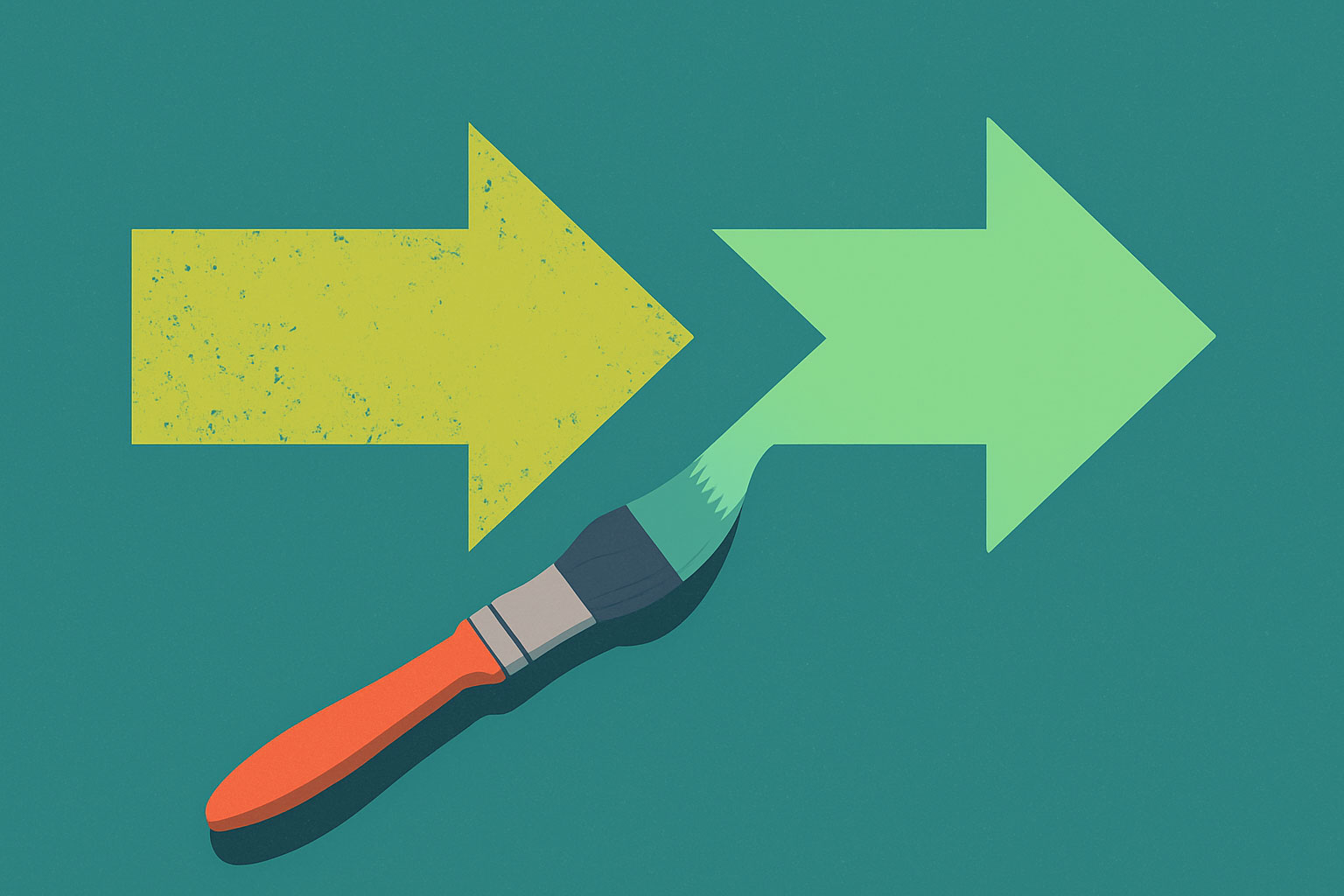A brand refresh is often a smarter move than a full rebrand—it modernizes your identity while preserving trust, equity, and recognition. This post explores the strategic benefits of subtle brand evolution and highlights companies that have pulled it off brilliantly.
Why a Brand Refresh Often Makes More Sense
Many businesses confuse growth with reinvention. But a rebrand implies a change in core identity—something most companies don’t actually need. A brand refresh, by contrast, updates visual and verbal elements while preserving the heart of what people already recognize and trust.
Key advantages of a brand refresh:
- Continuity of Recognition: You keep what works and build on it.
- Cost Efficiency: A refresh is often faster and more budget-friendly than a full overhaul.
- Lower Risk: You avoid confusing loyal customers or diluting brand equity.
- Faster Buy-in: Internally and externally, it’s easier to gain support for evolution than revolution.
How a Brand Refresh Works
A brand refresh updates existing assets to align with where the brand is now—and where it’s going. This might include:
- Refining the logo (think: thickness, spacing, simplification)
- Evolving the color palette for clarity or accessibility
- Revising typefaces for modernity and digital performance
- Rewriting tone of voice to sound more current, confident, or conversational
- Realigning messaging to better reflect values, purpose, or audience focus
It’s not about changing what you stand for. It’s about expressing it more clearly and effectively.
5 Brands That Nailed the Refresh
- Instagram: From skeuomorphic camera to minimalist glyph. Instagram’s brand refresh in 2016 replaced the detailed icon with a vibrant, simplified symbol. While it polarized audiences at first, the refresh modernized the brand without changing its core function or feel.
- Dropbox: A new look for a bigger mission. As Dropbox expanded beyond file storage to collaboration tools, its refresh used bold color systems and a flexible brand grid. It retained the box icon, maintaining recognizability while signaling broader ambitions.
- Mailchimp: Playful, but more mature. Mailchimp’s 2018 refresh kept the monkey but paired it with a bold yellow palette, new illustrations, and a more polished type system. The change acknowledged their growth into a serious platform—without losing personality.
- Burger King: Back to its roots, intentionally. Burger King’s 2021 refresh embraced its 1969 Saul Bass–inspired logo, warm colors, and retro typography. It wasn’t a throwback for nostalgia’s sake—it aligned with the brand’s shift toward better ingredients and transparency.
- Figma: A refresh that stayed invisible. Figma’s brand refresh refined line weights, spacing, and typography, but the logo felt untouched to the untrained eye. It’s a masterclass in subtlety—improving function while preserving identity.
When Rebranding Might Actually Be Necessary
While a refresh is often the best move, there are exceptions. You may need a full rebrand if:
- You’ve changed your name or core offering
- Your company has merged or been acquired
- Your existing brand carries negative baggage
- You’re targeting a radically different market
Even then, elements of the old brand can sometimes be reimagined rather than discarded.
Design and Messaging: Small Changes, Big Impact
A successful brand refresh lives in the details:
- A slightly bolder typeface can boost legibility.
- A reworked headline hierarchy can modernize messaging.
- A refined icon set can elevate perception without overwhelming users.
These updates often go unnoticed—but that’s the point. A refresh shouldn’t shout. It should feel natural.
Internal Alignment Matters
A refresh isn’t just about surface-level design. It’s also an opportunity to align internally—retraining teams, updating templates, and revisiting how your brand shows up across channels.
When done well, it reinforces your culture as much as your customer perception.
Want to Stay Relevant? Evolve Gently
A brand refresh helps you signal momentum without burning your foundation. It lets you communicate progress while honoring what your audience already knows and trusts.
If you’re not sure whether it’s time for a tweak or a transformation, remember: evolution often beats revolution.
Want help modernizing your brand without losing what makes it special? Let’s talk.


